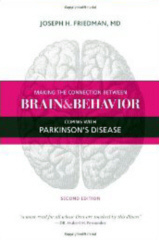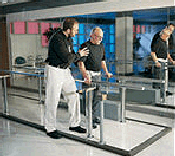In the largest assessment of its kind coffee has been found to reduce the risk of Parkinson's Disease as have tea and caffeine. With coffee the risk of Parkinson's Disease was reduced to 72%. The strength of this association reached the maximum at approximately 3 cups per day.
 When tea and caffeine were included in the assessment the risk of Parkinson's Disease reduced in relation to the intake. The risk of Parkinson's Disease was reduced by 26% for every two cups of tea consumed and by 17% for every 200mg of caffeine taken. The association of coffee and tea consumption with the risk of Parkinson's Disease was stronger for men than it was for women. The association of caffeine consumption with the risk of Parkinson's Disease was stronger in postmenopausal women when they had ever used hormones. These associations were weaker in the USA than they were in Europe and Asia.
When tea and caffeine were included in the assessment the risk of Parkinson's Disease reduced in relation to the intake. The risk of Parkinson's Disease was reduced by 26% for every two cups of tea consumed and by 17% for every 200mg of caffeine taken. The association of coffee and tea consumption with the risk of Parkinson's Disease was stronger for men than it was for women. The association of caffeine consumption with the risk of Parkinson's Disease was stronger in postmenopausal women when they had ever used hormones. These associations were weaker in the USA than they were in Europe and Asia. 









 Motor nerve damage leads to symptoms such as muscle weakness, cramps, spasms, a loss of balance and coordination. People may find it difficult to walk, feel like they have heavy legs, stumble, or tire easily. Damage to arm nerves may make it difficult to do routine tasks like carry bags, open jars, or turn door knobs. Sensory nerve damage can cause tingling, numbness, pinching and pain. Autonomic nerve damage can lead to abnormal blood pressure and heart rate, reduced ability to perspire, constipation, bladder dysfunction, diarrhea, incontinence, sexual dysfunction, and thinning of the skin. For more information go to
Motor nerve damage leads to symptoms such as muscle weakness, cramps, spasms, a loss of balance and coordination. People may find it difficult to walk, feel like they have heavy legs, stumble, or tire easily. Damage to arm nerves may make it difficult to do routine tasks like carry bags, open jars, or turn door knobs. Sensory nerve damage can cause tingling, numbness, pinching and pain. Autonomic nerve damage can lead to abnormal blood pressure and heart rate, reduced ability to perspire, constipation, bladder dysfunction, diarrhea, incontinence, sexual dysfunction, and thinning of the skin. For more information go to
